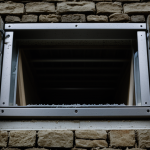Key considerations before installing a home elevator in London’s multi-level residences
Small text
When planning home elevator installation in London residences, a thorough pre-installation checklist is vital. Begin by assessing the existing multi-level property structure to ensure it supports elevator integration without compromising architectural integrity. Consulting local elevator specialists and architects early in the process offers tailored expert advice, helping to identify any structural limitations or customization needs.
Also to see : Unlocking newcastle’s zoning laws: the ultimate guide to crafting an ideal home office
Defining clear goals for the installation enhances decision-making. Consider if the elevator is primarily for accessibility, such as aiding residents with mobility challenges, or aimed at improving lifestyle and potentially increasing long-term property value. These objectives influence elevator type, placement, and design choices suitable for London’s unique housing stock.
Early expert consultations also help clarify feasibility within the constraints of space and existing building layouts. Such upfront diligence minimizes modifications and aligns expectations, ensuring smoother project progression. Prioritizing accessibility and value in installations provides residents with lasting benefits, while thoughtful integration supports aesthetic continuity in London homes.
This might interest you : The definitive guide to navigating treehouse construction laws for your london garden retreat
Navigating London-specific building regulations and permits
Small text
Understanding London building regulations is fundamental before proceeding with any home elevator installation. Securing the correct home elevator permits and planning permission ensures that your project complies with local laws and avoids costly delays. Typically, a building permit from the local council is mandatory for structural alterations involved in elevator installation.
Compliance requires meeting safety standards and accommodating any heritage or zoning restrictions specific to London residences. These codes might dictate elevator dimensions, shaft construction, and fire safety measures. Engaging early with council planning departments clarifies submission timelines and documentation, streamlining approvals.
Local councils often require detailed drawings, engineer assessments, and evidence of how the elevator integrates with the existing structure. Therefore, collaborating with accredited professionals who understand London’s rigorous codes is essential. They guide you through preparing applications that satisfy all requirements efficiently.
In summary, obtaining the necessary permits, adhering to building regulations, and securing compliance are crucial steps that demand attention from project inception. Navigating London’s regulatory landscape effectively safeguards your investment while enabling safe, functional elevator installation tailored to your multi-level residence.
Step-by-step installation process for home elevators
Small text
The home elevator installation steps in London residences follow a systematic process to ensure safety and efficiency. First, thorough site preparation assesses structural integrity and available space, crucial in multi-level properties with limited room. This phase includes marking the shaft location and verifying load-bearing capacity per structural engineer analysis.
Following preparation, structural modifications may be necessary—such as creating or reinforcing elevator shafts and adjusting floor openings. These changes must comply with London building regulations and consider architectural preservation, especially in older estates.
Next, the installation team proceeds with elevator component assembly, including mechanical and electrical systems. This step requires precise coordination among specialists to integrate controls, safety systems, and power supply seamlessly.
Project management dictates that each phase adheres to a realistic timeline, typically spanning several weeks, depending on project complexity. Delays can be minimized by maintaining clear communication among contractors, suppliers, and homeowners.
Finally, rigorous testing and certification ensure the elevator meets operational and safety standards before use. This comprehensive step-by-step process guarantees a successful and compliant home elevator installation tailored to London’s demanding residential environments.
Choosing the right elevator type and design for London homes
Small text
Selecting the ideal home elevator type for London residences requires balancing space, functionality, and aesthetics. Three primary models dominate: hydraulic, traction, and pneumatic lifts. Hydraulic elevators offer smooth rides and are suitable for heavier loads but need more space for machinery. Traction lifts are energy-efficient and quieter, ideal for modern residential settings with moderate space. Pneumatic tube elevators stand out for compactness and minimal structural intrusion—perfect for narrow or period London homes where conserving room is crucial.
Space-saving elevators blend seamlessly into London’s often constrained interiors. Designs with transparent glass panels or minimalist cabins enhance natural light and preserve visual openness, addressing typical London space challenges. Integrating smart home features like voice controls and remote monitoring can further boost convenience, accessibility, and safety.
Choosing an elevator also depends on who will use it. For residents with mobility challenges, prioritizing smooth controls, safety sensors, and low step thresholds aligns with accessibility needs. Meanwhile, lifestyle-oriented buyers might focus on style and advanced technology to complement their home’s interior.
Ultimately, combining the right home elevator type with thoughtful design options ensures your installation enhances mobility, comfort, and property appeal within the unique constraints of London residences.
Key considerations before installing a home elevator in London’s multi-level residences
Small text
A thorough pre-installation checklist is critical before a home elevator installation in London residences. Start by assessing the existing multi-level property’s structural suitability—not all buildings can support an elevator without adaptations. This evaluation should consider load-bearing walls, ceiling heights, and shaft placement, ensuring minimal disruption to the home’s integrity.
Seeking expert advice from local elevator specialists and architects is essential. Early consultations help identify potential challenges unique to London’s diverse residential architecture, such as listed building restrictions or limited space. Experts provide tailored recommendations on elevator types and configurations that align with both the property’s structure and the homeowner’s goals.
Clarifying installation objectives upfront supports informed decisions. Whether prioritizing accessibility for mobility-impaired residents, enhancing lifestyle convenience, or boosting long-term property value, these goals influence choices regarding elevator design, location, and features. For example, accessibility needs may necessitate smooth controls and ample cabin size, while lifestyle upgrades might focus on aesthetics and technology integration.
By combining a detailed structural assessment with targeted expert guidance and clear objectives, homeowners can ensure their home elevator installation is both practical and beneficial within London residences.
Key considerations before installing a home elevator in London’s multi-level residences
Small text
Before committing to a home elevator installation in London residences, conducting a comprehensive pre-installation checklist is indispensable. The first step involves evaluating the existing multi-level property’s structural aspects, including load-bearing walls, ceiling height, and shaft placement. This assessment determines if the building can safely support the elevator without compromising integrity or requiring extensive modifications.
Engaging with local elevator specialists and architects early provides crucial expert advice tailored to London’s unique housing stock. These professionals help identify potential obstacles like limited space or listed building constraints and recommend the most suitable elevator types and configurations. Their input ensures that installations comply with structural and aesthetic requirements.
Another key consideration is defining clear installation goals. Homeowners must decide whether the elevator will primarily serve accessibility needs, enhance lifestyle convenience, or increase property value. For instance, prioritising accessibility calls for features like spacious cabins and smooth controls, while lifestyle upgrades may focus on elegant design and smart technology integration.
By combining a meticulous property evaluation, specialist consultation, and goal clarity, homeowners can achieve a safe, effective, and value-adding home elevator installation in London’s challenging residential environments.
Key considerations before installing a home elevator in London’s multi-level residences
Small text
A critical step in any home elevator installation in London residences is conducting a detailed pre-installation checklist focusing on the property’s existing structural conditions. This involves evaluating load-bearing walls, floor-to-ceiling heights, and shaft placement within often compact multi-level buildings. Such analysis ensures the property can safely accommodate an elevator without compromising its integrity or requiring excessive alterations.
Early engagement with local elevator specialists and architects provides invaluable expert advice. These professionals understand London’s architectural diversity and common constraints like limited space or listed building regulations. Their early input aids in identifying the ideal elevator configuration and helps anticipate challenges unique to London residences.
Defining clear goals upfront is essential. Whether the motivation is accessibility, enhancing lifestyle, or increasing long-term property value, these aims shape critical installation decisions. Accessibility priorities might dictate oversized cabins or easy controls, while lifestyle improvements could focus on design integration and technology features. Thus, combining a thorough structural assessment with targeted expert guidance and explicit goals ensures each home elevator installation is both practical and advantageous for London homeowners.
Key considerations before installing a home elevator in London’s multi-level residences
Small text
A comprehensive pre-installation checklist is fundamental for a successful home elevator installation in London residences. The first critical step is assessing the existing multi-level property’s structure, focusing on load-bearing walls, ceiling heights, and potential shaft placement. This evaluation determines whether the building can safely support the elevator while minimizing disruptions to the home’s architecture.
Engaging with local elevator specialists and architects early provides essential expert advice tailored to London’s unique residential challenges. Specialists can pinpoint spatial constraints, anticipate structural modifications, and interpret compliance with regulations or listed building statuses. Their guidance ensures selecting elevator types and designs compatible with both the property and homeowner goals.
Clearly identifying installation objectives—such as prioritizing accessibility for residents with mobility needs, enhancing everyday convenience, or increasing long-term property value—is equally important. These goals influence decisions on cabin size, control systems, and aesthetic integration. For example, accessibility-focused installations typically require user-friendly controls and spacious interiors, while lifestyle-oriented projects might emphasize sleek designs and smart features.
By combining structural assessment, targeted expert consultation, and goal clarity, homeowners can effectively plan a home elevator installation that harmonizes safety, function, and value within London residences.
Key considerations before installing a home elevator in London’s multi-level residences
Small text
A comprehensive pre-installation checklist is essential when planning a home elevator installation in London residences. The foremost step involves a detailed assessment of the existing multi-level property’s structural integrity—evaluating load-bearing walls, ceiling heights, and potential shaft location. This ensures the building can safely accommodate the elevator without necessitating extensive architectural modifications.
Equally important is engaging with local elevator specialists and architects at the outset. Their expert advice is invaluable in addressing unique challenges faced in London residences, such as limited space, building age, and compliance with local regulations. This collaborative approach identifies the most appropriate elevator types and configurations that align with the property’s structure and homeowner objectives.
Clear goal definition guides technical and design decisions. Whether prioritising accessibility for residents with mobility needs, enhancing lifestyle convenience, or aiming for long-term property value appreciation, these priorities shape the choice of elevator features, cabin size, and control systems. For example, ease of use and safety sensors benefit accessibility, while sleek designs and smart technologies cater to lifestyle improvements.
By integrating thorough structural evaluation, professional guidance, and explicit goal setting, homeowners can ensure their home elevator installation is safe, efficient, and suited to the distinct demands of London residences.









